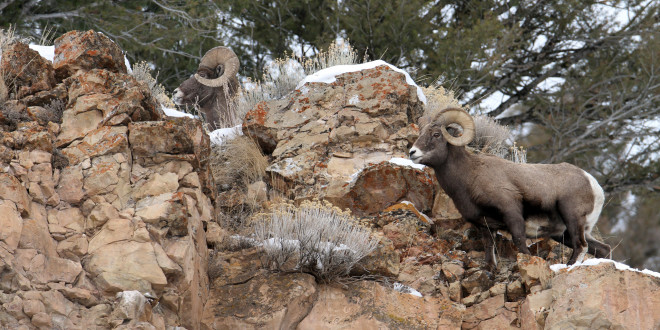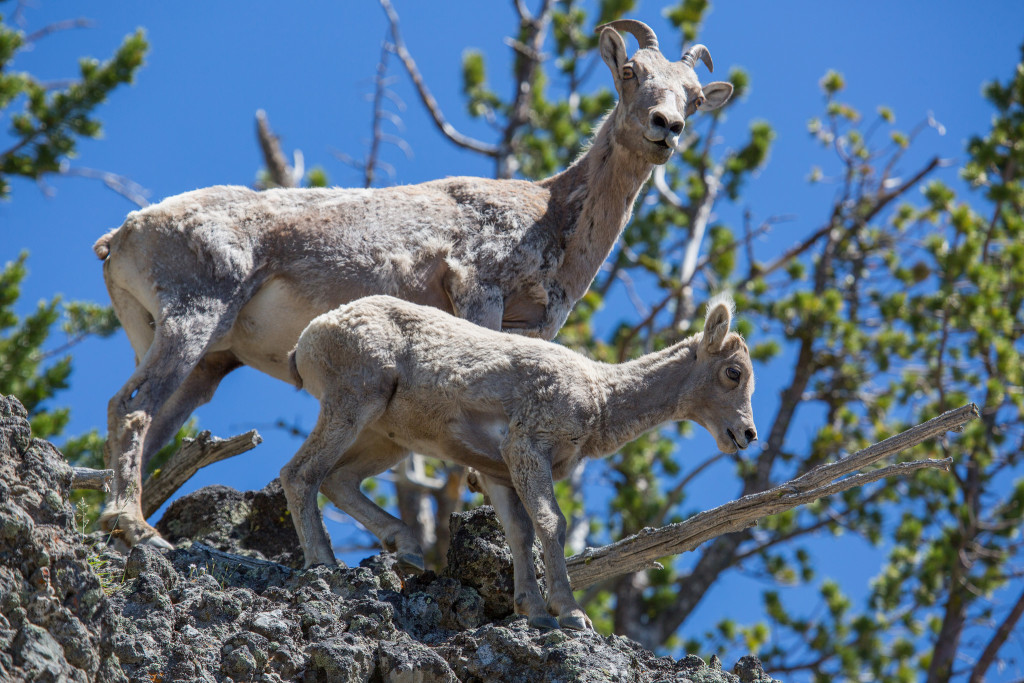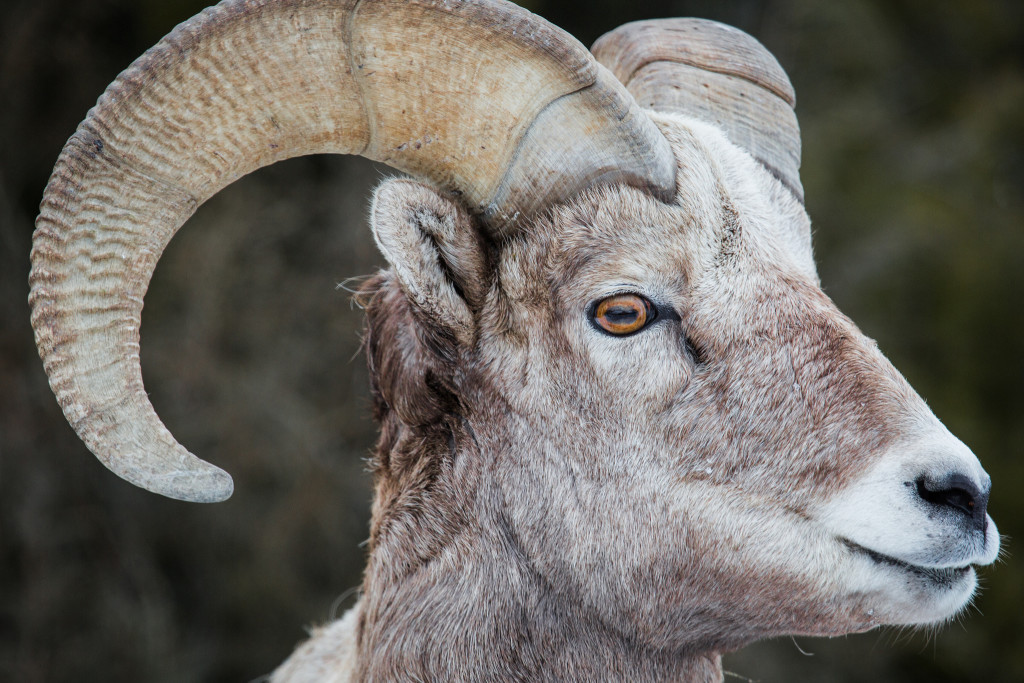Have you ever been driving through Yellowstone National Park when, all of a sudden, your way is blocked by bighorn sheep?
Imagine the scene: you’re cruising along, perhaps toward Tower Fall or the Grand Canyon of the Yellowstone, heading toward the Dunraven Pass, when traffic ahead of you grinds to a halt. Against the cliffside, hanging like a theater backdrop, rangers gesticulate above a current of brown. Cars are edging to the side. When you final arrive, you see them: 10, 15 head of bighorn sheep trotting down the highway.
Bighorn sheep are not an uncommon sight in Yellowstone National Park. Although they are not as abundant as bison (as of 2014, an estimated 197 bighorn sheep lived inside Park boundaries, with 421 in the greater northern Yellowstone area) or elk, they have established haunts year-round and are mainstays of the wildlife-watching scene, if you know where to look.
They are a great delight to see, whether on the steep cliffs of northern Yellowstone or up close on the Grand Loop Road.
In summertime, bighorn sheep can be seen around Mount Washburn and along the Dunraven Pass. Year-round, they may be found on the slopes of Gardner Canyon, outside Mammoth Hot Springs. They have also been sighted opposite Calcite Springs, above Soda Butte, and in the backcountry around the eastern Absarokas.
Basic Facts
- Males are called rams, females ewes, children lambs.
- On average, a ram weighs 174-319 pounds; a ewe, meanwhile, can weigh up to 130 pounds.
- Bighorn sheep live an average of six to fifteen years.
- Yellowstone’s bighorn sheep are Rocky Mountain bighorn sheep (Ovis canadensis).
- Other subspecies of bighorn sheep in North America include Desert bighorn sheep, Dall sheep, and Stone’s sheep.
- Between 1981-82, a pinkeye epidemic severely reduced the Yellowstone herd; the impaired vision impacted their ability to navigate cliffsides.
Diet
- Summer: feed on grasses.
- Fall/winter: forage for shrubby plants.
- Engage in rumination i.e. chew cud to ensure more nutrients are absorbed from meals.
Herds
- Ewes live in groups of five to fifteen on average, which includes lambs and yearlings.
- Bachelor rams live in groups of two to five.
- In winter, ewe herds group together into bands as large as 100 head.
Mating
- Mating season begins in November.
- Males engage in “butting contests” to secure mates/prestige; a ram can charge at up to 20 miles per hour, ending with a head-on collision with the skull of another ram.
- Bighorn sheep gestation lasts five to six months.
- One to two lambs are born in May or June.
The Horns
- A ram’s horns can weigh up to 40 pounds.
- Horns grow the most in summertime and in early life. Ewe horns all but cease growing after four to five years.
- Horns consist of two parts: a bony extension of the skull and a hardened sheath of keratin-like material (the same material fingernails are made of) grown by specialized hair follicles.
- Ram skulls have two extra layers of bone above the brain; this insulates the brain against shock when rams are engaging in head-on collisions.
- When a ram’s horn is broken at the tip, it is “broomed.”
- Horn sizes influences dominance and rank within herds.
 Yellowstone Insider Your Complete Guide to America's First National Park
Yellowstone Insider Your Complete Guide to America's First National Park








You must be logged in to post a comment.